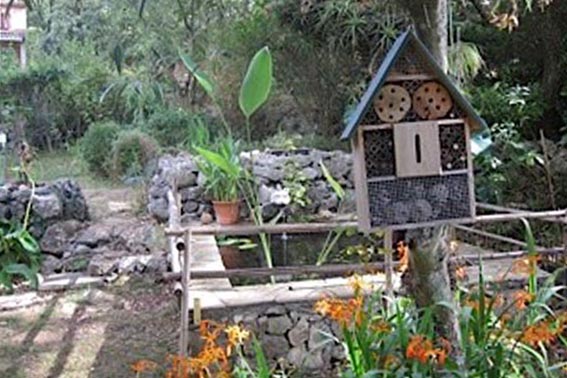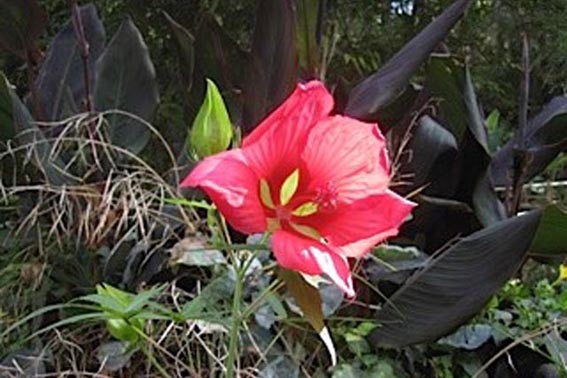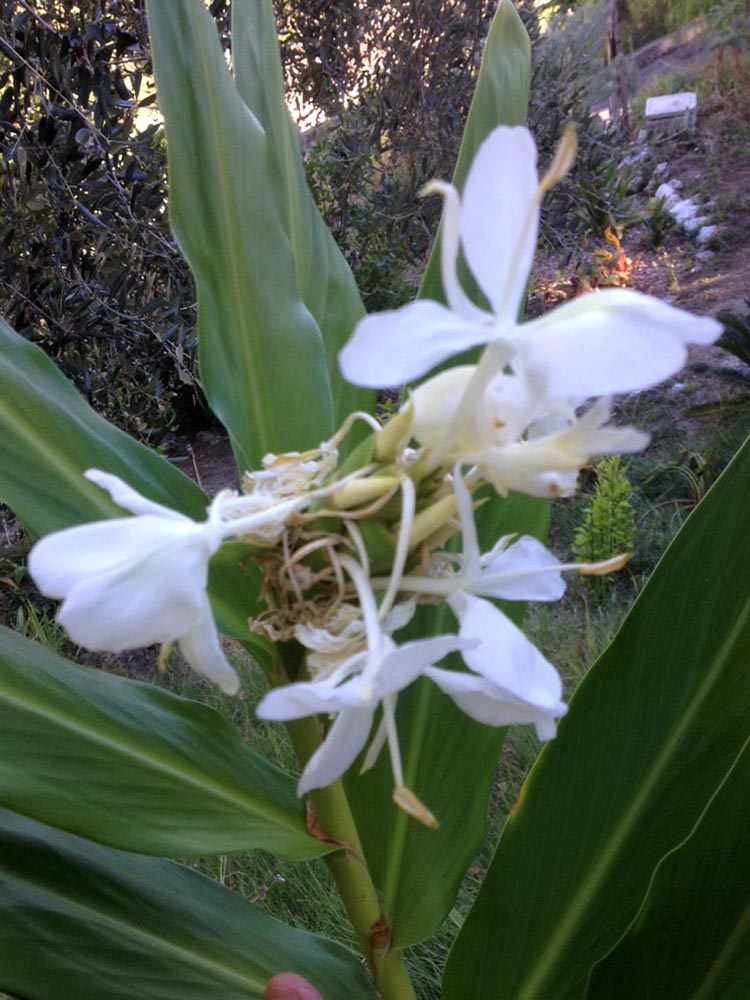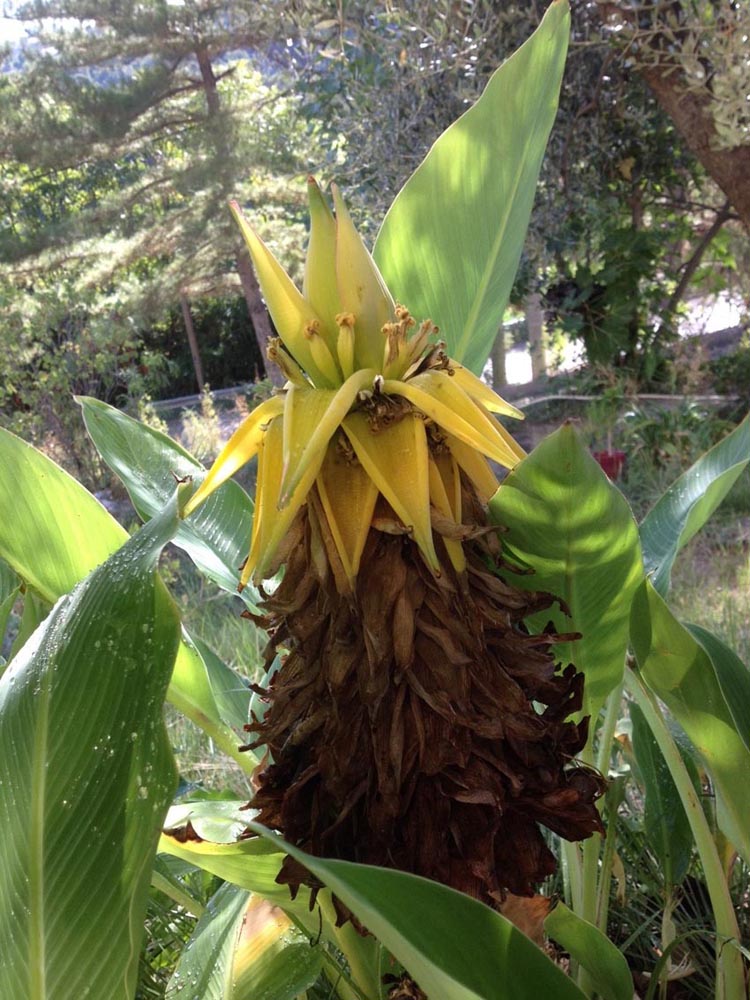September / septembre 2016
Visits to gardens in La Gaude and Vence, Alpes-Maritimes
Click on the images to enlarge them / Cliquez sur les images pour les agrandir
After months of hot, dry weather it was a delight to visit the Jardin de L’Argelière. Lysiane Offerhaus has been creating her 3,000 square metre garden for 34 years, and it reflects her years of hard work. Perched in the green valley of La Gaude in the Alpes-Maritimes, the garden is a densely planted series of restanques with cool shade providing most welcome relief from the summer heat.
The evergreen oaks shelter over 1,200 species, which grow in their own ecosystem without use of either pesticides or chemical fertilisers. It was interesting to see shrubs like dogwood that don’t readily grow in this area, and we wondered if the fallen leaves helped acidify the soil. I also particularly enjoyed seeing the small ponds with their aquatics and enormous fish and thought they contributed greatly to the impression of lushness in the garden.
As well as the huge range of plants, we all greatly admired Lysiane’s book, in which she has recorded the botanical names of all her plants, cross-referencing the alphabetic list with a separate list detailing the part of the garden in which each plant can be found. She told me that compiling this book was an excuse for not doing the housework! It may have been an excuse for her – but it was certainly an inspiration for us.
Our morning visit over, we went to Martin and Daniela Smith’s house for a delicious buffet lunch and enjoyed the beautiful view over the valley of Vence down towards the Mediterranean. After lunch Martin gave us a tour of his challenging hillside garden. Here is his introduction to the garden:
“We bought the house six years ago from a Belgian doctor whose family only came for the summer holidays. The plant collection was therefore very limited – pines, olive trees, oleanders and cordylines and a few bitter-orange trees. The garden is on a steepish slope and stretches over eight terraces. I had to cut down most of the dangerously unstable pines and cypresses, so there is very little shade.
I have tried to adopt a water-wise approach and have planted mostly drought-resistant Mediterranean, South African and Australian species. However, given that we enjoy some frost protection thanks to the Baou de St Jeannet to the north of the property, I yielded to the temptation to grow some tender exotic plants.
Interesting exotic species include a small grevillea collection, notably G. johnsonii and G. ‘Bronze Rambler’, certain salvias (S. elegans, S. involucrata and S. guaranitica), various mimosa species including bluish-leaved Acacia baileyana, Wigandia caracasana, Fremontodendron californicum, Sparmannia africana, Arbutus canariensis, Doryanthes palmeri, Echium gentianoides and E. fastuosum, a few palms including three Syagrus romanzoffianum, Musa basjoo, Musella lasiocarpa, Abutilon megapotamicum, Strelitzia reginae and Eupatorium sordidum. Succulents include Aloe striatula, Aeonium atropupureum, and a few agaves, most daringly Agave attenuata.
Future projects include creating a proper succulent garden on one of the sunny banks at the top of the garden, the acquisition of a glasshouse and the creation of a water feature.”
In flower for our visit were:
Musella lasiocarpa, the dwarf banana aroused quite a lot of interest as not only has it a beautiful, long-lasting flower, it is hardier than most other bananas and needs less water.
We rounded off a very interesting day with a visit to the world-renowned Chapelle de la Rosaire de Vence. Built and decorated between 1949 and 1951, it was the greatest project of Henri Matisse’s life. He worked on its architecture, stained glass windows, interior furnishings, murals, and even the priests’ vestments, and regarded it as his masterpiece.
Many thanks to our hosts, and to Martin for organising the day.
Text: Jenny McNaught
Photos: Jenny McNaught, Katie Bromilow and Martin Smith
![]()










